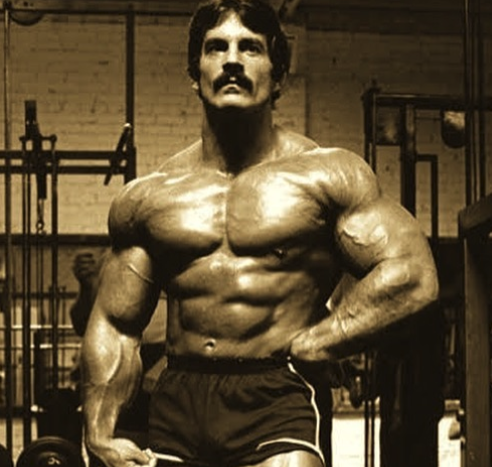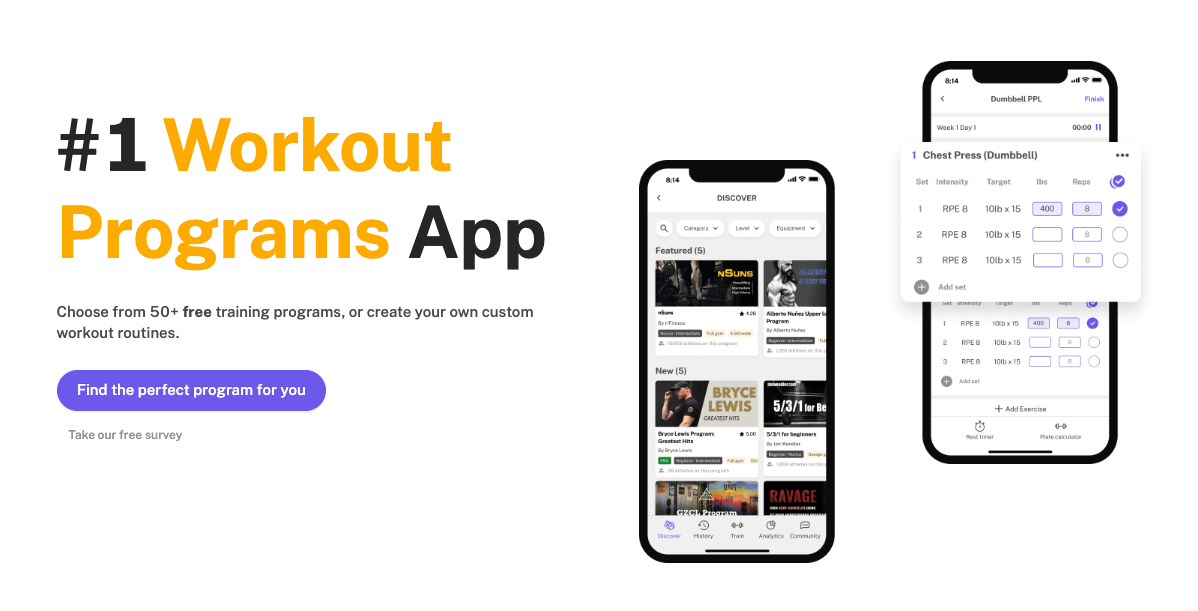Heavy Duty Workouts for Bodybuilding
Written by The Boostcamp Editors
Is the Heavy Duty training method better for your bodybuilding gains?
When it comes to bodybuilding training and bulking up, we tend to think that higher reps with medium weights are the way to go, but is that true? Or could heavier, intense, low rep workouts be more beneficial for bodybuilding than massive amounts of volume? When training for hypertrophy (muscle mass) typically you see your training programs consisting of higher volume with moderate intensity, usually leaving a few reps in the tank. We tend to think that low reps are for powerlifting and strength sports, but workouts of this nature may be just as good for bodybuilding, this is the Heavy Duty workout method.
Let’s dive in and explore what exactly the Heavy Duty workout method is and why it is good for bodybuilding.
The Heavy Duty Workout
Let’s take a look at the Heavy Duty Training method, otherwise known as high intensity training, or HIT. No, not high intensity interval training, that is HIIT, and refers to short, sporadic workouts that come in intervals, with minimal rest in between each set or circuit, and HIIT workouts often refer to cardio. Let it be clear, we are not talking about cardio workouts right now.
What exactly we are talking about is heavy duty training for bodybuilding. This is a bodybuilding training method used by some of the biggest bodybuilders of all time. Two of the names that come to mind when heavy duty workouts are mentioned are Mike Mentzer and Dorian Yates, both being world class bodybuilders. Mentzer was a Golden Era bodybuilder that brought amounts of muscle mass to the stage that had never been seen before. Dorian Yates took that a step further, bringing even more muscle mass, and then he won the Mr. Olympia 6 times. Both of these competitors used the heavy duty, high intensity, low rep training method, and they looked phenomenal on the bodybuilding stage. So what exactly does the Heavy Duty workout method for bodybuilding entail?

Mike Mentzer (image courtesy of Instagram (mentzerhit)
The heavy duty workout method is much more than just low repetitions. It involves really brutalizing the muscles, breaking them down like never before, but doing low volume as a whole. Heavy duty training involved doing about 1-3 warm up sets to help you get prepared for your exercises and reduce the risk of injury, followed by only 2 working sets. The working sets consisted of only 6-8 reps per set, so that’s nothing, right? Wrong.
Heavy Duty Workout Rep Schemes
Heavy duty training meant that the last rep of each of the working sets was just about absolute failure, meaning that the lifter could physically not move anymore weight on their own. From there, the lifter would push beyond the point of failure and utilize training methods such as forced reps, partials, and negative reps, all of which will require a training partner.
Forced Reps
The training partner will assist the lifter in completing more reps after they hit absolute failure. Tom Platz (known for his gigantic legs) is someone who preaches forced reps, stating that when you are absolutely done, you actually have five more reps in the tank. He would take his sets to failure even on compound exercises like the barbell squat and the hack squat.
Partial Reps
This is where the lifter will only complete part of the repetition, so form is pretty much compromised, but not to the point where you are blatantly risking injury, and tension is kept on the targeted muscle.
Negative Reps
For negative reps, the training partner will help the lifter complete the positive half of the rep, then the lifter will hold the weight and lower it slowly, usually for a set amount of time. This keeps a lot of tension on the muscle.
The bottom line when it comes to heavy duty training is you have to push the weights to absolute failure. Even though heavy duty training consists of low reps, those reps involve a good mind-muscle connection, and pushing that last rep to failure, but it does not stop there. Heavy duty training pushes you to always go beyond failure with things like partial reps, forced reps, and negatives.
Heavy Duty Recovery
Now, with heavy duty training, there has to be recovery equivalent to the intensity of the workouts. High intensity workouts will break down the muscle like never before, really leaving you needing to focus on recovery like never before. Recovery is where you truly grow, and the muscle fibers repair and grow bigger and stronger. So, what do you need to do to get your recovery in check?
Rest Days
Heavy duty workouts absolutely cannot be completed every single day. The intensity of these workouts is something that needs to be spread out in between training sessions. For example, while the heavy duty training program calls for training each body part twice a week, Mike Mentzer trained only three days a week, with four days dedicated to rest and recovery. He split his body into two parts, and his workouts into Workout A, and Workout B.
Dorian Yates on the other hand worked out each muscle group once per week, with 2-3 rest days a week, and either 4 days lifting or 5 days lifting each week.
The point is, rest days are essential to give your body a few days without taking a beating. This does not mean taking weeks off of the gym at a time, as frequency still matters, but if you are truly utilizing the heavy duty training program to the fullest extent, then you should be taking a few rest days per week.
Sleep
Sleep is where the body generates the most testosterone and human growth hormone, which are both essential for building muscle and staying healthy. That being said, prioritize maintaining a proper sleep schedule as part of your recovery protocol.
Diet and Supplements
Another one of the most important parts of recovery is diet. Eating the proper foods to refuel your muscles is crucial to get them to repair and grow, especially after heavy duty training.
Piggybacking off of your diet, supplements are just as important because they help to make sure you are getting the proper amount of macro and micronutrients that you may not get just from your diet. Things like protein powder, creatine, and multivitamins are great supplements to help with your recovery.
Finding a Workout Program
If the heavy duty training method does not interest you, keep in mind that there are plenty of good programs available o, making sure that you are making the most gains. If you are looking to stay on track and continue with linear progression, then finding a good workout program is the key. Where do you look for a good workout program? Check out the Boostcamp App for some great programs.
Boostcamp is home to over 50 FREE workout programs that consist of strength, hypertrophy, or functional fitness, or both, from the push pull legs program all the way to upper lower, there are so many programs to choose from that can help fit your needs. However, with Boostcamp, you don’t have to just follow a pre-written program (although each program is written by a professional), you also can create your own program as well, and track your progress to make sure you are on the right track. That being said, when you are looking to incorporate some serious training to further your progress in strength sports, then check out Boostcamp.
Heavy Duty Workout Wrap Up
Overall, the heavy duty training program is something that is not for the faint hearted. Heavy duty workouts involve low reps, but they are some of the most intense and demanding reps that you will put yourself through. Aside from that, you really need to prioritize recovery.
Do you think you have what it takes to do some heavy duty training?
Be sure to follow Boostcamp on Instagram and subscribe on YouTube!

Header image courtesy of Instagram (@mentzerhit)

